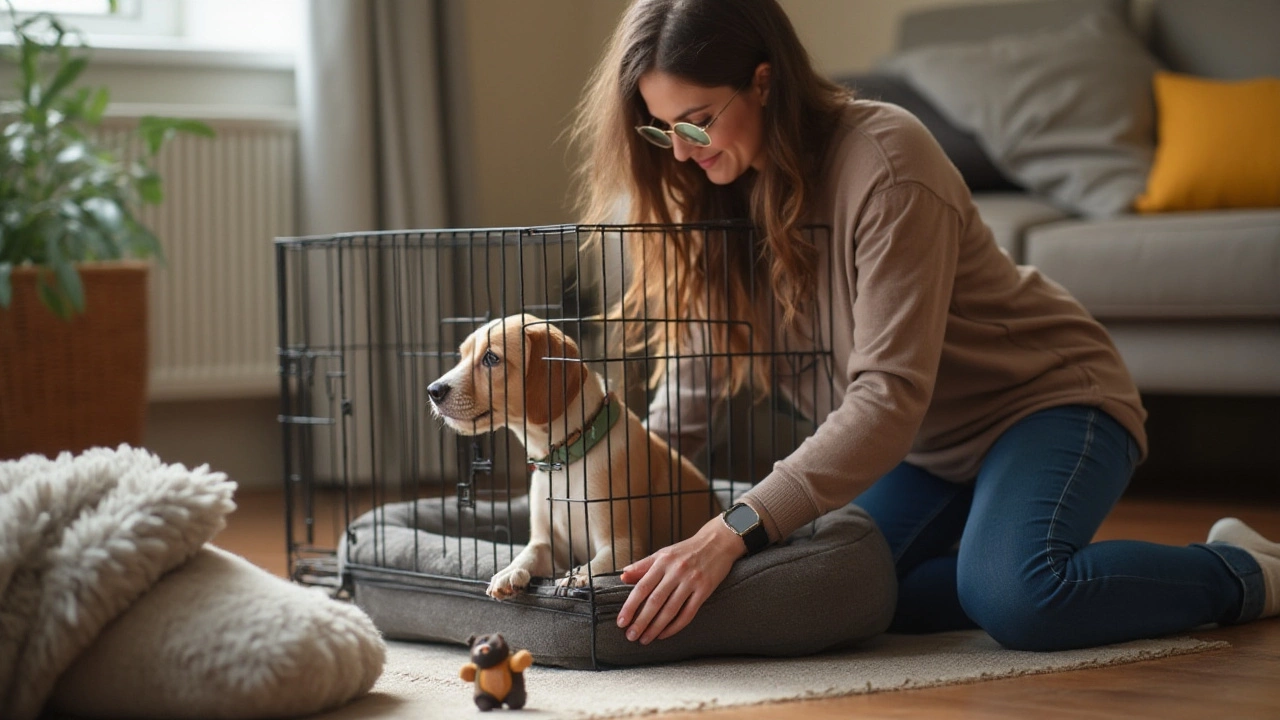Dog in Cargo: What You Need to Know Before Flying
If you’ve ever wondered whether it’s okay to send your dog in cargo, you’re not alone. Many owners face the same question when a trip requires air travel and the cabin isn’t an option. The good news? With the right prep, a cargo flight can be safe and stress‑free for both you and your pup. Below, we break down the key steps you should take, from choosing the perfect crate to handling health paperwork.
Choosing the Right Crate for Cargo Travel
The crate is the most important piece of equipment for a dog in cargo. It needs to be airline‑approved, sturdy, and well‑ventilated. Look for crates that meet IATA (International Air Transport Association) standards—these have the proper dimensions, locks, and metal construction. Measure your dog from nose to tail and add a few inches of space so they can turn around; a cramped crate can cause anxiety and even injury.
Don’t forget to line the bottom with absorbent padding, but avoid soft bedding that can shift during flight. A towel or a thin foam pad works well and keeps the crate clean. Place a water dish that won’t spill, and consider a small chew toy to keep your dog occupied.
Health Prep and Documentation
Airlines require a recent health certificate—usually within 10 days of travel. Schedule a vet visit to confirm your dog is up to date on vaccinations and parasite preventatives. Ask the vet to check your dog’s ears, eyes, and paws for any issues that could worsen in a pressurized cabin.
Most carriers also want proof of microchip implantation and a copy of the dog’s passport (if traveling internationally). Keep all paperwork in a folder attached to the crate handle so staff can find it quickly. Some airlines ask for a sedative; however, most vets advise against sedation for cargo flights because it can affect a dog’s ability to regulate temperature.
Before the day of travel, give your dog a light meal a few hours before the flight and limit water intake to reduce the chance of accidents. A short walk right before the crate is loaded helps them burn off excess energy and settle down.
When you arrive at the airport, check the temperature in the cargo hold. Many airlines provide a cargo temperature chart—ideal temps are between 45°F and 85°F. If it’s too hot or cold, ask the airline about alternative arrangements or a later flight.
Finally, label the crate clearly with your contact information, your dog’s name, and a ‘Live Animal’ sticker. If you’re traveling on a long‑haul flight, consider a mid‑journey check‑in to make sure your dog is okay.
Flying a dog in cargo isn’t something to take lightly, but with a good crate, proper health prep, and clear communication with the airline, you can feel confident that your furry friend will arrive safe and sound. Have more questions? Reach out to a pet‑friendly travel specialist or your veterinarian to tailor a plan that fits your dog’s specific needs.
- Morgan Ainsworth
- 0 Comments
The Impact of Flying with Dogs in Cargo: What Every Pet Owner Should Know
Flying with your dog can be a nerve-wracking experience, especially when they have to travel in the cargo hold. Understanding the potential stress and trauma involved can help pet owners make informed decisions. This article explores the factors affecting a dog's experience in cargo, shares expert insights, and offers practical tips for easing their journey. A look into how airlines handle pet transportation provides clarity on safety measures.
View More
